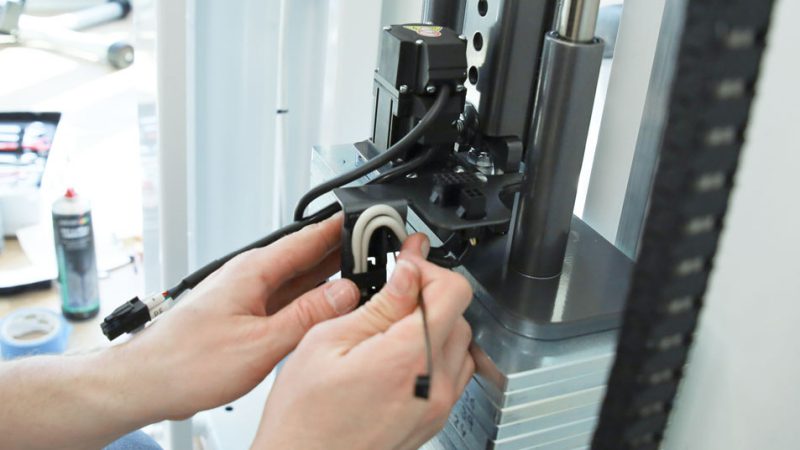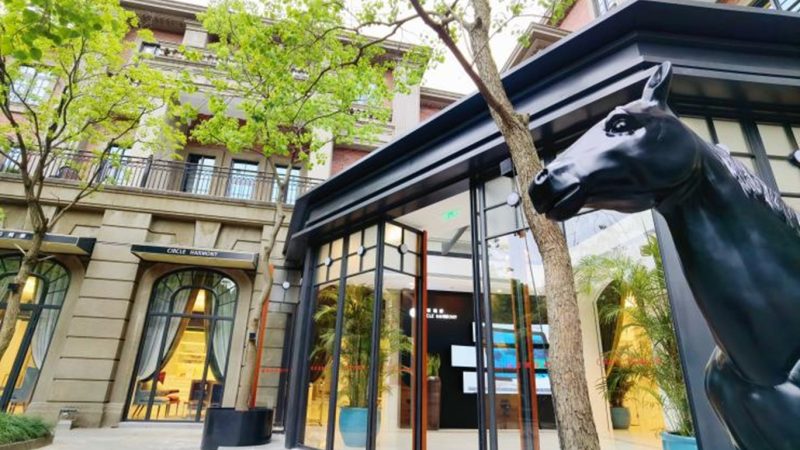It may say something about Kristina’s approach to life at the time, that she decided to double down on her exercise. ‘I thought – maybe I just need a few more weeks of swimming, and it’ll work its way out with more stretching,’ she recalls. ‘Two weeks later, it didn’t get any better, and I said, “That’s it. I’m going to get X-rays.”’ The results were quite shocking. ‘The doctor rang and said “Come and see me immediately.” He really panicked me.’ ‘When I saw him, he said, “What trauma have you had to your back? An accident or injury? Have you been in a car accident?”’ ‘I said, “No, I haven’t done anything in the 12 months that I recall.”’ It slowly dawned on Kristina that several years earlier, she was involved in an incident while skiing, when an out-of-control skier crashed into her. ‘I was just standing at the bottom of the lift, waiting for the rest of the family to come down. Somebody came down really fast and clipped me and I went flying because I was in my bindings.’ ‘I landed right on my coccyx and I remembered a shooting pain in my spine.’ The doctor said the x-rays showed three vertebrae in Kristina’s spine were compressed into a wedge shape. ‘It was like a honeycomb compression,’ Kristina recalls. ‘Rather than the vertebrae being in nice separate blocks, one after the other, they were in a wedge shape.’
Now regularly in severe pain, Kristina consulted with Osteopath Leesa Mackay at getback South Melbourne for treatment. ‘My back would spasm, and I’d be in extreme pain,’ she said. ‘On two occasions, I had to have a colleague accompany me to getback for Leesa to work on my back.’ While Kristina understood that she needed to improve the strength and mobility of her spine’s supporting muscles for long-term relief, her condition first required lots of hands-on therapy to alleviate pressure on nerves and correct spinal misalignments. ‘I wasn’t allowed onto the DAVID devices for around two years because my back was just so sensitive,’ Kristina explains. ‘Eventually, Leesa said I was ready to go on the devices, and they slowly, ever so slowly, monitored me and watched me to make sure I wouldn’t overdo it.’ Kristina said she understood that she had to be patient and persevere with the exercise therapy to bring stability to her back. ‘It was very slow progress,’ she said. ‘I really wanted to improve the strength of my back, so I kept going twice a week according to my treatment plan until we started increasing the weights.’
After completing her initial getback program, Kristina decided to continue with a maintenance plan. While she says her back still isn’t perfect, she is confident that it is still improving.

Kristina is also conscious of the effects that bone density and osteoporosis may have on her health as she ages. She has bone density tests ‘every once in a while’ in an effort to prevent loss of bone density.
She recently consulted with an Endocrinologist and told her about the wedges in her vertebrae. The Endocrinologist suggested taking some x-rays to review her spinal health.
After 15 years, there was another surprise in store for Kristina. ‘I asked the Endocrinologist to share the results with Leesa because she’s always looked after me so well,’ she said. ‘When Leesa got the results she messaged to say there was some great news.’ ‘I went and looked at the images myself and I was shocked. Where the hell are the wedges? They’re gone!’ Kristina said that at times over the years she worried that she ‘would never, ever be back to normal again.’ ‘Now 15 years have passed since the last x-rays and the nice outcome is that even with ageing, there has been an improvement in my back.’ Kristina said she now does ‘all my normal daily life things. I drive a car, I swim regularly, I walk a lot.’ ‘Next week we’re going to go to London for a week, then Spain and France.’
 India
India 
























